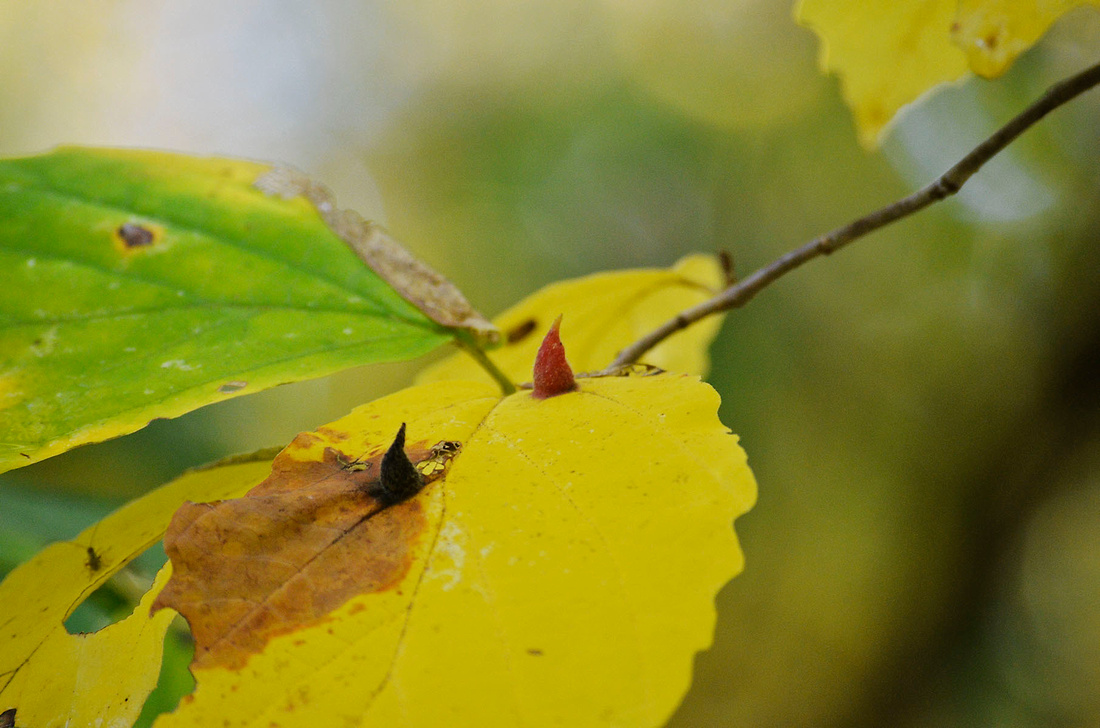Early witches
 Witch hazel gall
Witch hazel gall
One of the prettiest trees on display during the autumn color extravaganza is the Witch-hazel, a ubiquitous hardwood that grows no more than 20 feet tall in the understory of our woods. They turn a soft yellow, and when the honey light catches them just right, the foliage positively glows. They almost define the word "eye-catching," and when you spot one, there are a couple of additional features that draw you in. The first is a curiosity on most of the leaves: a red-green growth shaped like a witch's hat. This structure is known as a cone gall, and it's the handiwork of one species of aphid known to science as Hormaphis hamamelidis. Gall-making insects are legion, but they're typically very picky about the plants they use to create what are, in essence, plant tumors. The Witch-hazel Cone Gall Aphid uses only Hamamelis virginiensis, our native Witch Hazel—hence, the insect's species name—for gall-making. The structures serve as both food sources and nurseries for the insect and its young, and the last generation of aphids is currently out and about searching for suitable places in the Witch-hazel twigs in which to lay the eggs that will overwinter, hatch next spring, and start the gall-making all over again. In short order, their handiwork will be composting on the forest floor. But with the leaves gone, there'll still be Witch-hazel flowers in bloom to catch the human eye.